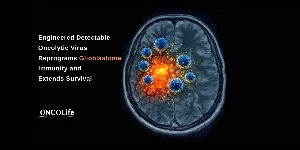RNA Liquid Biopsy Could Transform the Future of Cancer Detection

15 September 2023
Researchers at UC Santa Cruz, have developed an innovative RNA liquid biopsy that enhances early cancer detection by targeting RNA "dark matter" in the bloodstream. This approach captures both protein-coding RNA and repetitive noncoding RNA, a previously unexplored area in diagnostics. This breakthrough could revolutionize early cancer diagnosis, guide precise treatments, and even aid in detecting other diseases like Alzheimer's.
In a significant breakthrough, a team led by Assistant Professor Daniel Kim at the University of California, Santa Cruz, has developed a promising non-invasive blood test harnessing RNA to detect early-stage cancers. The innovative test can diagnose various cancer types, such as pancreatic, lung, and esophageal, at their nascent stage, when treatment outcomes are most promising. The pioneering research, recently published in Nature Biomedical Engineering, was supported by the American Cancer Society.
Dr. Kim's research, underscores the importance of RNA "dark matter," specifically repetitive and noncoding RNA, which remains largely uncharted in genetic studies. Contrary to previous methodologies that focused primarily on DNA-based diagnostics, Kim's approach magnifies the significance of noncoding RNA – the genetic material that doesn't code for proteins.
While a healthy individual's bloodstream contains minimal repetitive noncoding RNAs, Dr. Kim's findings demonstrate a noticeable presence of these RNAs in early-stage cancer patients. By deploying an advanced RNA liquid biopsy platform known as COMPLETE-seq, Kim's team can scrutinize the entirety of a patient's transcriptome, including the commonly overlooked repetitive RNA.
New RNA test outperforms current methods
While many liquid biopsy tests often miss up to 75% of early-stage cancers due to weak biological signals from small tumors, Dr. Kim's research indicates that integrating repetitive RNA significantly enhances test sensitivity. For instance, using COMPLETE-seq achieved a 91% sensitivity rate for detecting colorectal cancer.

“If you look at these different cancers, each has its own characteristic cell-free RNA profile, but a lot of these RNAs are coming from the millions of repeat elements that are found throughout the genome. What we found was that when we trained machine learning models for cancer classification, the models perform better when you introduce these repetitive cell-free RNAs as additional features. We see higher sensitivity in terms of detecting cancer, so we think that these repeat elements are actually providing a lot of rich cell-free RNA information that people previously hadn't looked for,” Dr. Kim said.
Highlighting the study's potential, Kim aims for an all-encompassing RNA liquid biopsy test for early cancer detection. He believes the technique can also be instrumental in diagnosing diseases that alter repetitive RNA patterns, such as Alzheimer's, and envisions a future of early detection and precise treatments using RNA.
Abstract of the research
Profiling of repetitive RNA sequences in the blood plasma of patients with cancer
Abstract: Liquid biopsies provide a means for the profiling of cell-free RNAs secreted by cells throughout the body. Although well-annotated coding and non-coding transcripts in blood are readily detectable and can serve as biomarkers of disease, the overall diagnostic utility of the cell-free transcriptome remains unclear. Here we show that RNAs derived from transposable elements and other repeat elements are enriched in the cell-free transcriptome of patients with cancer, and that they serve as signatures for the accurate classification of the disease. We used repeat-element-aware liquid-biopsy technology and single-molecule nanopore sequencing to profile the cell-free transcriptome in plasma from patients with cancer and to examine millions of genomic features comprising all annotated genes and repeat elements throughout the genome. By aggregating individual repeat elements to the subfamily level, we found that samples with pancreatic cancer are enriched with specific Alu subfamilies, whereas other cancers have their own characteristic cell-free RNA profile. Our findings show that repetitive RNA sequences are abundant in blood and can be used as disease-specific diagnostic biomarkers. For the full text of the article, click this link:>>>











Comments
No Comments Yet!